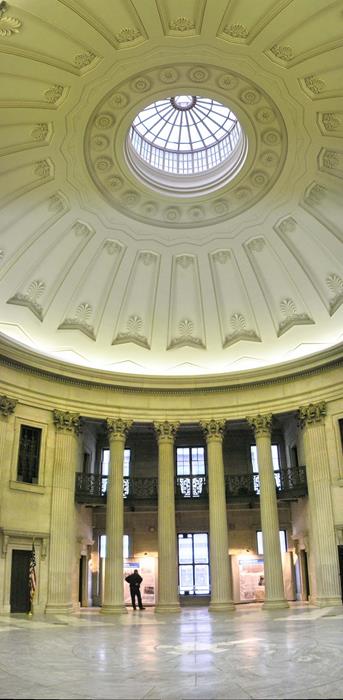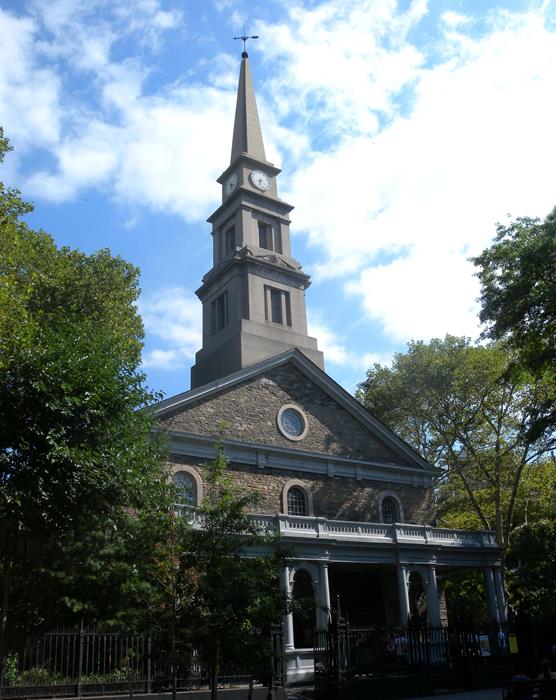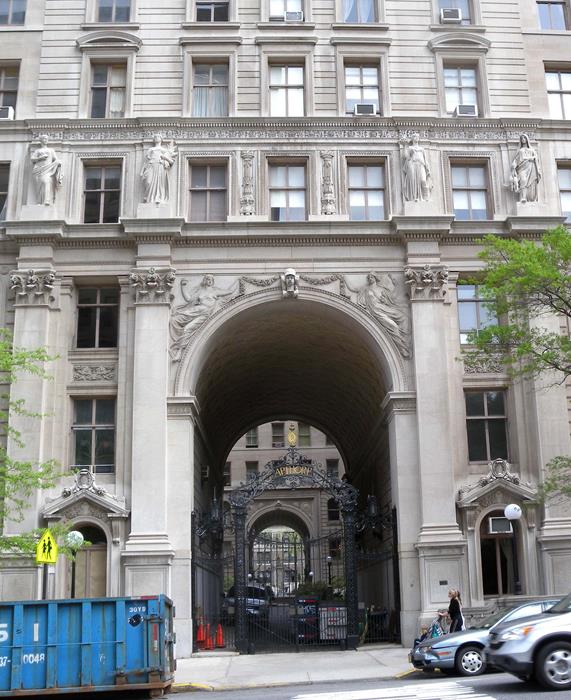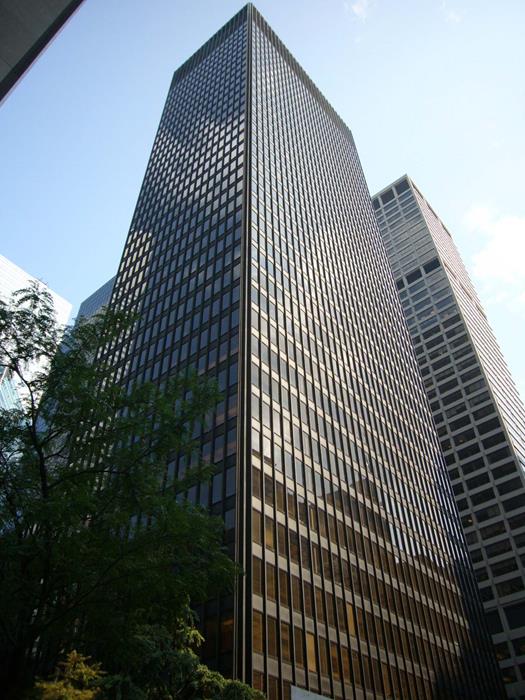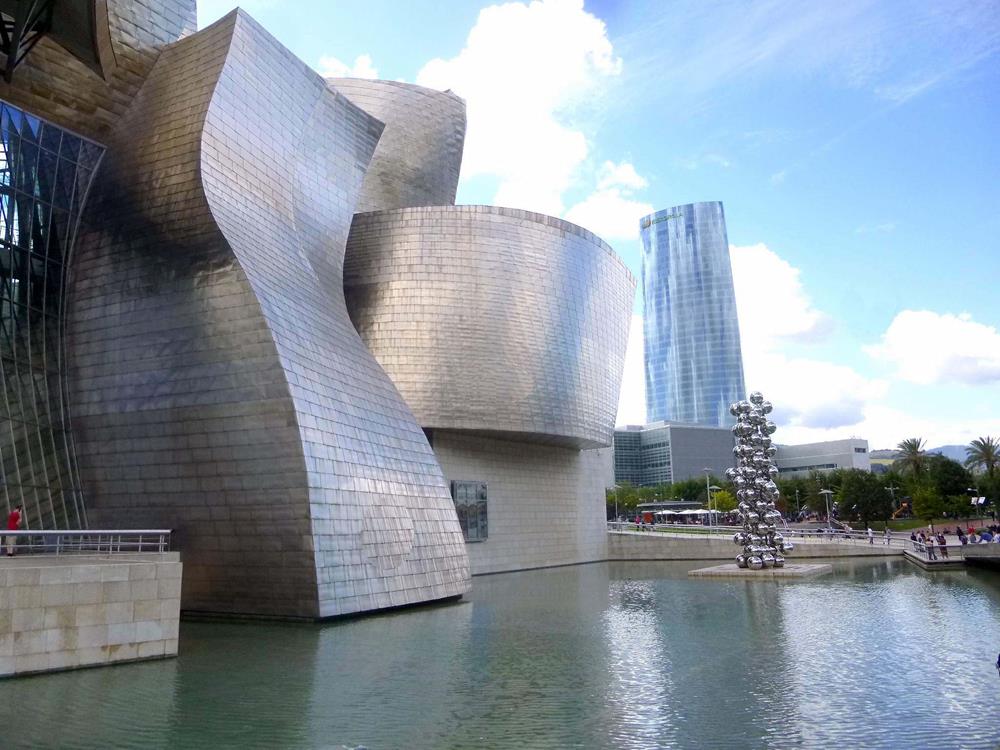New York City’s architecture isn’t just about towering skyscrapers like the Empire State Building. There’s a rich history in each block waiting to be discovered. The more you explore, the more you’ll appreciate the diverse architectural eras that have shaped this city. In this post, we’ll explore some of the most influential architectural styles that have defined this centuries-old city.
Colonial and Classical Era (Late 17th to Mid-20th Centuries)
During this period, classical architecture was dominated by solid, traditional forms like domes and tall columns. Colonial homes, influenced by Greek and Roman designs, are still visible in the city today. The British-built colonial structures reveal the impact of budget on construction: sloped roofs and brick walls were common in affluent homes, with minimal additional ornamentation.
A prime example of this era is the Conference House in Staten Island. Constructed in 1675, it once hosted figures like Benjamin Franklin and John Adams. A visit today transports you to an old British village. Some even regard the Statue of Liberty as a symbol of classical architecture, a playful nod to its status and design (pun intended). We’ll leave it to you to decide on your next visit.
Here are the other examples of a colonial era architecture:
- Federal Hall National Memorial: This iconic building was originally completed in 1703 as New York’s City Hall. It was later remodeled in the Classical Revival style in 1842, featuring prominent colonnades and a grandiose portico. It’s famously known as the place where George Washington took the oath of office as the first President of the United States.
- St. Paul’s Chapel: This beautiful chapel is a part of Columbia University and was built in 1907 in the Neo-Classical style. The chapel features stunning architectural elements, including a dome and a portico with Corinthian columns.
- Fraunces Tavern: This building is one of the few remaining examples of pre-Revolutionary architecture in New York City. Built in 1719, it has a significant historical background, especially known for being the site where George Washington bade farewell to his officers at the end of the American Revolution.
- The Morris-Jumel Mansion: Located in Washington Heights, this mansion is the oldest house in Manhattan. Built-in 1765 in the Georgian style, it served as a headquarters for both sides of the American Revolution and offered a glimpse into colonial life.
Greek Revival Era: Early 1820s
The 1820s, following Greece’s independence, sparked a love affair with Greek architectural styles in New York. The Federal Hall National Memorial is a striking example, offering visitors a glimpse of steep steps, a temple-like façade, and sturdy Doric columns. This site also holds historical significance, having been the setting for a presidential oath. Another notable site is Astor Place in NoHo, showcasing the prevalence of Greek revival architecture in the city.
Besides these, here are the other Greek revival architecture examples in New York:
- St. Mark’s in the Bowery Church: This church is one of the oldest sites of continuous religious worship in New York City. The main building, originally constructed in the Georgian style in 1799, features a Greek Revival steeple added in 1828, designed by architect Ithiel Town.
- Brooklyn Borough Hall: Situated in Downtown Brooklyn, this building is an example of Greek Revival architecture. It was designed by architects Calvin Pollard and Gamaliel King and is made from Tuckahoe marble. The building reflects the Greek Revival style with its impressive façade.
- Flatbush Reformed Dutch Church Complex: This historic church complex is another fine example of Greek Revival architecture. It includes a church, cemetery, parsonage, and church house, showcasing the style’s characteristic features.
Renaissance Era: Late 19th to Early 20th Centuries
Renaissance architecture in New York marked a departure from the colonial style, with architects selectively borrowing elements such as Roman arches from their predecessors. This period’s designs often featured arches and vaults, fitting harmoniously into the buildings of that time.
A prime example is New York’s City Hall, one of America’s most iconic structures. Despite its age, City Hall maintains a youthful appearance. Interestingly, its construction was prolonged to nine years due to the outbreak of Yellow Fever. The building’s dome is a classic representation of Renaissance elegance. Visitors can explore the City Hall and appreciate the cohesive blend of arches, vaults, and columns that define its beauty.
Besides the City Hall, other examples of Renaissance-era architecture include:
- The Apthorp: Located on the Upper West Side, the Apthorp is a prime example of Italian Renaissance Revival Style architecture. Designed by architects Charles Clinton and William Russel, this building was completed in 1907 and was once the largest apartment building in New York City.
- Grand Central Terminal: While primarily known for its Beaux-Arts architecture, Grand Central Terminal also exhibits elements of Renaissance Revival architecture. This landmark, completed in 1913, is notable for its grandiose proportions and classical allusions, showcasing the influence of Renaissance aesthetics in its design.
- The Italianate Buildings: This style, part of the larger Romantic movement, was influenced by the villas of Renaissance Italy. It’s distinguished by features such as low-pitched or flat roofs with square cupolas, tall and narrow windows with round arches, and ornate moldings. Notable areas in New York City showcasing Italianate buildings include the Stuyvesant Square Historic District, Gramercy Park Historic District, Brooklyn Heights Historic District, Carroll Gardens, Cobble Hill, and the Green-Wood Cemetery Gatehouse.
International Era: Late 19th to Early 20th Centuries
Originating from Germany’s influential Bauhaus school, the International Style was first brought into the limelight by the Museum of Modern Art’s inaugural art exhibit in 1932. Characterized by simplified geometry, lack of ornamentation, emphasis on functionality, and use of modern materials, the International Style marks a distinct shift in architectural trends. Although these buildings can be subtle in their presence, they are impactful in design.
One of the most iconic examples is the Seagram Building. Designed by Ludwig Mies van der Rohe in 1958, this building epitomizes elegance and the principles of modernism. It was Mies’ first attempt at tall office building construction and became a significant figure in the New York skyline with its bronze and dark glass facade. The building set a new standard for the modern skyscraper and is particularly noted for setting back the building 100 feet from the street edge, creating a highly active open plaza.
Other examples include:
- Lever House: Designed by Skidmore, Owings & Merrill, this building was completed in 1952. It’s a 24-story stainless steel and heat-resistant glass structure that sits atop an elevated two-story base, providing a shaded public plaza and serving as a mediator to the interior lobby.
- United Nations Headquarters: Completed in 1952, this building features simple, geometric forms and a facade dominated by glass, symbolizing openness and transparency. It is an iconic representation of International Style architecture in New York City.
Art Deco Era: Early 20th Century
In the early 20th century, architects began focusing on adding beauty and intricate details to buildings, moving away from the formalism of Classical and the repetition of Colonial designs. They utilized materials like glass and steel to enhance their creations. A standout example from this era is the Chrysler Building, renowned for its exquisite construction. Each brick of this iconic skyscraper was laid by hand. Its unique design features, including a striking glass and steel crown, have made it a staple in New York postcards.
Other examples of Art Deco architecture in New York include:
- Empire State Building: Designed by Shreve, Lamb & Harmon, this iconic skyscraper is a classic example of Art Deco architecture. Completed in 1931, it stands out for its symmetrical design and luxurious lobby, adorned with Art Deco elements.
- 30 Rockefeller Plaza: This building, completed in 1933, is a standout example of Art Deco architecture. The center includes 19 commercial buildings showcasing pure Art Deco in both architecture and decoration.
- One Wall Street: A classic example of Art Deco, One Wall Street features clear geometric shapes and a distinctive roof, making it easily recognizable in the New York skyline. The interior design is equally impressive, with typical Art Deco ornamentation and marble cladding.
- American Radiator Building: This building is notable for its striking black granite and gold facade. Built in the late 1920s, it features typical Art Deco design elements like vertical lines and abstract patterns.
- Barclay-Vesey Building: Completed in 1927, this building is an excellent example of Art Deco architecture, with its distinctive cantilevered tower.
Modernist Era: Mid-20th Century
The advent of Modernism marked a significant shift in New York’s architectural scene. Architects, traditionally fixated on granite, began experimenting with glass and aluminum, striking a balance between utility and aesthetics. Despite some resistance in Europe, New Yorkers embraced this change. The Guggenheim Museum is a testament to this era’s architectural prowess. Designed by Frank Lloyd Wright and opened in 1959, this building is famous for its unique spiraling rotunda, which takes visitors past the art on inclined ramps. A visit to the museum offers not just artistic masterpieces but also a chance to admire the meticulous design details of the building itself.
Other examples of modernist architecture include:
- U.N. Building: Opened in 1952, it was designed by architects Oscar Niemeyer and Le Corbusier. The 39-story Secretariat Building is notable for its glass curtain wall, a hallmark of the postwar International Style.
- Manufacturers Hanover Trust Company Building: This building, designed by Charles Evans Hughes III and Gordon Bunshaft, is an important milestone of midcentury modernism. Originally a bank, it was notable for its ground-floor visible vault.
- William Lescaze House: Built in 1934, this was the first Modernist house in New York City. Its design showcases the influences of Le Corbusier’s five points and is noted for its bright stucco and Purist volumes.
Post-Modern Era: Mid-20th Century to Present
New York City, known for its eclectic and evolving skyline, boasts several prominent examples of Post-Modernist architecture. These buildings are characterized by their departure from the strict functionality of Modernism, incorporating more expressive and often whimsical elements.
The post-modernist style arose during a shift towards minimalism and functionality. The city’s ever-changing real estate landscape saw the rise of hybrid buildings, incorporating modern elements into their design. The introduction of digital design software has transformed construction techniques, moving away from the traditional hand-laid brick approach. This evolution is evident in the numerous cranes dotting the New York skyline.
A prime example of this era’s architecture is the New York Times building. It embodies minimalism, energy efficiency, and a glassy exterior that reflects the organization’s ethos of transparency. The ongoing debate among experts and researchers on defining New York City’s current architectural style highlights its unique character.
Another post-modernist examples of architecture in New York include:
- AT&T Building: Now known as the Sony Tower, this skyscraper is noted for its postmodern flair, including an ornamental top and a grand arched entryway. It challenged the modernist demand for stark functionalism with its blend of efficiency and ornamentation.
- The Lipstick Building: Completed in 1986, this building is a collaboration between Philip Johnson and John Burgee. Its distinct cylindrical shape and red-granite-and-steel exterior give it a unique appearance, standing in contrast to the more traditional sharp-edged towers of the city.
Conclusion
New York’s architecture, while always known for its historic styles, is quickly evolving. Some new styles, like the Oculus in Lower Manhattan, are so indelible that they’ve already cemented their place in architectural styles. The variety is staggering, and though several other cities try to surpass New York’s architectural styles, it remains unbeaten.


